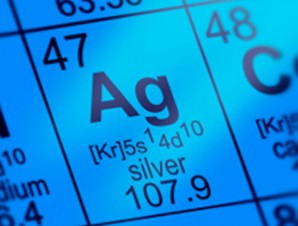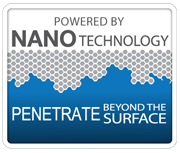By Tim Squirrell
Over the years, silver has seen its highs and lows as a medical and cosmetic product.
Its uses have included, but not been restricted to, keeping milk from spoiling, stopping water from becoming infected and use as an antibacterial agent. With the launch of our range of Silver and Pure Silver products it is this latter usage with which we are concerned.
In the early twentieth century, silver was often used in order to clean wounds and prevent infections; however, the advent of antibiotics caused it to be put on the back shelf, a position from which it has hardly moved until recently with the resurgence of interest in ‘Colloidal silver’. And hereby hangs the problem: all silver medicinal and cosmetic products are in danger of being tarred with the same brush.
Colloidal silver, it should be noted, is strictly an alternative medicine for which many unsupported claims are made; in addition, there have been some serious negative effects attached to its use. As a viewer of this website, you may have come across these claims and these problems, and they may concern you.
This article, it is hoped, will allay any fears you may have that the problems associated with the use of colloidal silver also apply to the Nanolia Silver product range. Each of the claims and problems will be addressed in turn in the following paragraphs.
- Silver products are ineffective
- Silver products are falsely marketed as ‘cure-all’ formulae
- Silver products cause argyria and are not adequately absorbed by the skin
Concern #1 – Silver products are ineffective
Silver colloids can be split into two main groups: Those that use silver in its base form. Silver in this form is not very reactive at all – in fact, it is so unreactive that one of its main uses is in jewellery, because it doesn’t corrode. As such, the claims that this form of silver, suspended in solution, could possibly kill bacteria or prevent infections are completely unsupportable.
Those that use silver ions, Ag+. These are particles of silver which have a positive charge, and as such are far more reactive than plain silver. They are bioactive, which means they have an effect on living cells, and in high enough concentrations they are antibacterial. This explains the rise in the use of silver preparations in wound dressings, particularly since the rise of MRSA. This is due to the fact that MRSA is resistant to antibiotics, and so it is necessary to find an alternative to the methicillin we would normally use. The antibacterial properties of silver ions mean that they are perfect for this job. Our products fall into the second of these two categories.
Concern #2 – Silver products are falsely marketed as ‘cure-all’ formulae
Colloidal silver is not a cure-all, and nor are our products. The latter are intended for cosmetic use only, and whilst proponents of the former may claim that colloidal silver can cure a multitude of diseases including cancer and AIDS, there is no evidence for this. We make no such claims regarding our products; what we do say is that they will help you cosmetically. We are only claiming what we are absolutely sure of!
Concern #3 – Silver products cause argyria and are not adequately absorbed by the skin
Argyria is a side effect caused by long-term high-dosage silver use, in which the colour of the skin turns ashen-grey. What happens is that silver particles, which are very unreactive, end up accumulating under the skin, as well as in the eyes and internal organs. In photography, silver darkens upon exposure to light, and this principle explains what happens with argyria: essentially, the built-up silver particles darken on exposure to sunlight, giving the skin a bluish-grey hue. Whilst it is essentially harmless, this doesn’t make it any more attractive.
Our products do not cause argyria. They have been dermatologically tested and have been shown to cause no allergic reactions, as well as receiving a rating of ‘very good’ in the tests that they underwent. They are completely safe to use, with no side effects.
So what, exactly, makes our product different from all the others?
- Nanotechnology does. Traditionally, colloidal silver preparations use microscopic particles of silver in order to treat infections. These microscopic particles then build up to the point where they are able to change the pigmentation of the skin – an undesirable side effect. These particles are very small, but not small enough.
- Nanoparticles are small enough that they do not build up to the point where they can cause argyria.
- Nanoscale particles are 1-100 nanometres, with one nanometre being 10-9 of a metre, or 0.000000001 metres. The fact that these particles are so very small also accounts for the fact that our products are absorbed into the skin at a far better rate than those of normal cosmetics, meaning that you can be assured that your body will receive all of the benefits of our products.
©Nanolia 2010



